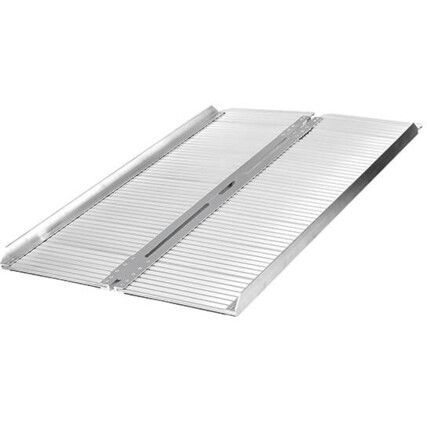Access Ramps
##What are Access Ramps?
Access ramps are ingenious solutions that make spaces accessible to everyone, regardless of mobility challenges. These inclined surfaces provide a smooth transition between different levels, ensuring easy access for wheelchair users, strollers, and anyone else who needs it, as well as making it easier to lift heavy objects.
##Why Access Ramps?
Navigating a flight of stairs in a wheelchair or with a heavy load can be quite challenging. However, access ramps can help eliminate these barriers and make spaces more inclusive. Access ramps provide a convenient and safe way for people to move around freely and independently.
##When are Access Ramps Used?
Access ramps are essential in various settings and scenarios:
- Public Buildings: Used for wheelchair access and compliance with accessibility regulations.
- Commercial Establishments: Ensure accessibility for customers with disabilities.
- Residential Settings: Provide access to homes for individuals with mobility challenges.
- Transportation Facilities: Facilitate boarding and alighting for passengers with disabilities.
- Industrial Facilities: Enable movement of equipment and materials between levels.
- Construction Sites: Aid in transporting construction equipment and materials safely.
##Access Ramps Types
Explore our range of access ramps to find the perfect fit for your needs:
• Wheelchair Ramp: Essential for accessibility, these ramps provide a safe and reliable means for wheelchair users to navigate elevated surfaces. With sturdy construction and ergonomic design, they offer independence and freedom of movement, enhancing the overall accessibility of environments.
• Portable Ramps: Convenient and adaptable, these ramps offer easy setup and mobility for temporary accessibility needs. They're perfect for occasional use, allowing users to navigate barriers effortlessly without the need for permanent installations.
• Telescopic Ramps: Versatile and adjustable, these ramps provide customizable solutions to accommodate various heights and spaces. Their scalability allows for flexibility in meeting specific accessibility requirements, ensuring seamless access for users in different environments.
• Threshold Ramps: Streamlined and effective, these ramps bridge small height gaps to facilitate smooth transitions at doorways and entry points. They eliminate barriers for wheelchair users and individuals with mobility aids, promoting seamless movement between spaces.
##Considerations When Choosing Access Ramps
Selecting the right access ramp is crucial for ensuring safety and usability. Here are a few things to consider:
- Regulatory Compliance: compliant ramps guarantee accessibility for all users and help avoid legal issues related to accessibility requirements.
- Weight Capacity: choosing a ramp with a suitable weight capacity ensures safety and durability in everyday use.
- Installation Flexibility: opting for ramps that offer flexible installation options allows for easy adaptation to different environments and spaces.
- Durability and Weather Resistance: ramps constructed from durable materials such as aluminium or fibreglass offer longevity and resilience against weather elements.
- Portability and Storage: for occasional or temporary use, portable ramps that are lightweight and easy to transport offer convenience and versatility. Foldable or telescopic ramps facilitate compact storage when not in use, saving space and facilitating transportation.
- Surface Grip and Traction: ramps with non-slip surfaces provide enhanced grip and traction, reducing the risk of slips and falls for users.
##FAQs:
Are there regulations regarding the slope or gradient of access ramps?
The regulations in the UK for wheelchair ramps specify that the gradient should not be steeper than 1:20 for residential buildings and 1:12 for public buildings. There are also requirements for specific width and landing dimensions. British Standard BS8300 recommends handrails and gradients not steeper than 1:12. Handrails are mandatory for gradients steeper than 1:20. In addition, there are other safety considerations such as local regulations, portable ramp standards, and the hazards of steep gradients. It is recommended to seek advice from accessibility experts.
Can access ramps be customized to fit specific spaces or requirements?
Measure from the ground level to the highest point where the ramp will end. Please remember that ramps should generally have a 1:12 slope ratio. This means that for every 1 inch of rise, there should be 12 inches of ramp length. To calculate the ramp's length, simply divide the rise by the slope ratio (1:12).
What ramp material to choose?
There is a common misunderstanding that fibreglass ramps are significantly lighter than aluminium ramps, but this is not entirely accurate. There's very little difference in weight between the two. If both types of ramps are appropriate for your situation, then the choice is entirely up to personal preference. You might choose based on which one you like the appearance of the most, or which one is affordable within your budget.







